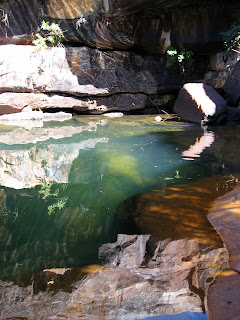Bring your attention into this moment…..
Visualize a sense of being in a place of peace and harmony. Feel the essence of that place in your body and allow it to calm and quieten your mind.
Allow the most beautiful potential of who you could be to emerge in your mind. What does this ideal potential you look like and feel like. Let the essence of this future you wash through you and experience his or her perfection; experience the particular aspect of perfection that you could potentially bring to the world. To anchor your perfect potential into your body here and now, let this aspect of you help you to release your tension so as to allow your perfect potential its full expression.
Begin by acknowledging and feeling the times when stress and haste and work have overwhelmed you, leaving you unable to cope with the pressure of juggling too many commitments at once. Hold these times soothingly, gently and patiently.
Acknowledge and feel the times when your world has fallen apart and left you stranded, alone and unprotected. Hold these times with compassion.
Acknowledge and feel the times when you have felt depressed and life has seemed grey and dreary. Hold them with joy.
Acknowledge and feel the times when you've experienced sorrow and abandonment. Hold them with tenderness.
Acknowledge and feel the times when your mind has governed you in a tight grip of skewed perception; when anger, resentment or indignation have distorted your judgment, when you have ben subjected to uncontrolled emotions that do not belong to you, and that have caught you and held you hostage. Hold these times with equanimity.
Acknowledge and feel the times when you have been caught by raging desire, so that rational, thoughtful behavior is no longer accessible. Hold these times with tranquility and peacefulness.
Acknowledge and feel the times when your mind has been deluded through ignorance or laziness or stubbornness, and hold these times with understanding and wisdom.
Acknowledge and feel the times when it has been necessary to compromise your integrity. Hold them with forgiveness.
Acknowledge and feel the times when you have been overcome by envy and jealousy, and hold yourself with enough self love and joy that you are able to let them go.
Acknowledge and feel the times when you have been avaricious. Hold them with a generosity of spirit.
Acknowledge and feel the times when you have felt agitated and anxious. Hold these times calmly.
Acknowledge and feel the times when you have experienced great pride. Hold yourself gently and humbly.
Acknowledge and feel the times when you have felt genuine hatred for someone or something. Hold this time, yourself and the object of hatred with loving kindness.
Acknowledge and feel the times when you have judged yourself or others harshly. Hold yourself or them with affection.
Acknowledge and feel specific times of trauma in your life; times when life has felt most cruel to you, or when you have been most cruel to yourself or others. Hold these times with bountiful warmheartedness and care. Gently cradling them with the perfect potential of who you could be in a perfect life under perfect circumstances.
Now let the perfect potential of who you are show you how to be centered in the luminosity of your pure self. Let it show you how to be centered in its brilliance in the midst of all the circumstances of your life.
Imagine how your luminous self would respond to stress and haste and overwork. Feel its patience and calm.
Imagine how your luminous self would respond to your world falling apart. Feel its compassion.
Imagine how your luminous self would respond to your depression. Feel its underlying joy.
Imagine how your luminous self would respond to sorrow and abandonment. Feel its tenderness.
Imagine how your luminous self would respond to your anger and indignation. Feel its equanimity
Imagine how your luminous self would respond to raging desire. Feel its tranquility.
Imagine how your luminous self would respond to your deluded mind. Feel its understanding and wisdom.
Imagine how your luminous self would respond to compromise. Feel its integrity.
Imagine how your luminous self would respond to your envy and jealously. Feel its ability to hold you with love.
Imagine how your luminous self would respond to avarice - yours or others. Feel its generosity.
Imagine how your luminous self would respond to anxiety and agitation. Feel its calmness.
Imagine how your luminous self would respond to your pride. Feel its humility.
Imagine how your luminous self would respond to your hatred. Feel its loving kindness.
Imagine how your luminous self would respond to your judgment. Feel its affectivity.
Imagine how your luminous self would respond to the the times when life has been particularly cruel to you. Let it hold you with warm heartedness and care.
Let your perfect potential hold you gently, soothe you and release you from the stranglehold of past conditioning. Feel your perfect potential settling into the cells of your body. Breathe into the feeling, allow it to anchor and take hold and become a reality, right here and right now.











